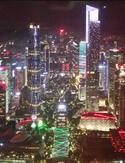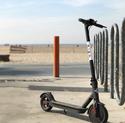An article in CityLab purports to show “why public transit works better outside the U.S.” However, it never actually demonstrates that public transit does work better in other countries; it merely shows that governments have attempted to make it work better. read more »
Transportation
How Many Really Commute by Transit?
According to the 2017 American Community Survey, about 7.6 million Americans, or 5.3 percent of commuters, take transit to work. However, the actual question on the survey asks, how do you “usually get to work last week.” If someone took transit three days and drove two, then transit gets checked. So how many really use transit on any given day? read more »
- Login to post comments
Autonomous Cars Are Our Real Future
Long a hotbed of new technologies, California insists on seeing its transit future in the rear mirror. Rather than use innovative approaches to getting people around and to work, our state insists on spending billions on early 20th century technology such as streetcars and light rail that have diminishing relevance to our actual lives. read more »
- Login to post comments
Reconciling a Love for Trains with an Opposition to Subsidies
As a life-long railfan, I love passenger trains. But as a transportation economist, I hate subsidies for the way they dilute productivity and transfer wealth from the many to the few. Thus, I am a reluctant opponent of subsidies to Amtrak and urban rail transit.
Romance of the Rails, a new book that the Cato Institute will publish in October, is my attempt to reconcile these views by looking deep into the history of passenger rail transportation. read more »
- Login to post comments
More Work at Home than Take Transit, Transit Retreats into Niche Markets
The new American Community Survey data indicates at least two significant narratives with respect to work access trends (commuting and working at home). One is transit work is becoming even more concentrated in only six of the nation’s 20,000 municipalities, the six transit legacy cities. The second is that working at home has passed transit in access to jobs, it now trails only driving alone and car pools. read more »
- Login to post comments
Streetcar Roundup
Milwaukee and Oklahoma City are both planning to open new streetcar lines later this year, so it is worth taking a look at how the dumbest form of transit is working in other cities. The table below shows all of the streetcar lines reported in the July, 2018 National Transit Database spreadsheet. Ridership numbers are shown for January and July and annual growth compares the last full year (August 2017-July 2018) with the year before that. read more »
Sanity in the Valley of the Sun
The Phoenix city council is considering delaying or even killing some planned light-rail lines because it is concerned that city streets are falling apart and too much money is being spent instead on an insignificant form of travel. read more »
- Login to post comments
Guangzhou, South and Central China and the Yellow River by Train
The prelude to my round trip by train across the Gobi Desert from Lanzhou (Gansu) to Urumqi (Xinjiang) was a trip from Hong Kong to Lanzhou. This article includes photos from that trip, and some from previous trips, as noted on the figures. The travel highlight was a 10.5 hour and 2,700 kilometer (1,700 mile) train trip from Guangzhou to Lanzhou, through southern and central China, then turning west along the Yellow River. read more »
Partners in Transit: Agencies team up with Lyft, Uber
Many public transit agencies are struggling to sustain lightly-used routes as passenger traffic dips in response to relatively cheap automobile fill-ups, a rise in work-from-home lifestyles, and the growing popularity of transportation network companies (TNCs), such as Lyft and Uber. The brunt of the decline has been sharpest in small and mid-size communities, where some bus services are infrequent, follow meandering routes, and stop running after peak hours. read more »
- Login to post comments
Rooting for Scooters
Expect to hear about folks in the Los Angeles area taking stands on the app-based, pay-by-the-mile electric scooters that seem to be scattered about the City of Angels in greater numbers by the day. Tough to tell how many, since scooter brands such as Bird are on a fast track that involves dropping scooters off on street corners, where customers take over, dispersing the two-wheelers without any set route or distribution plan involved. read more »
- Login to post comments






















